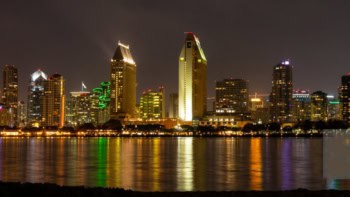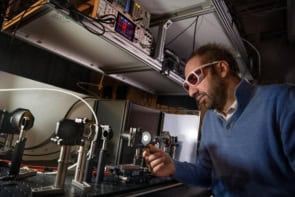This Sunday, 16 May, is the UNESCO International Day of Light so this episode of the Physics World Weekly podcast focuses on the humble photon and some of the amazing science and technology that it makes possible.
Our first guest is the astronomer Megan Tannock of Canada’s University of Western Ontario, who talks about brown dwarfs – objects that are too small to be stars, but are larger than planets. She explains how researchers observe the weather on brown dwarfs to determine how fast the objects are spinning – which turns out to be very fast, according to a recent study by Tannock and colleagues. She also talks about whether brown dwarfs could have planets of their own and whether some of these planets could harbour life.
From the dim worlds of brown dwarfs to one of the brightest lights on Earth, our next guest is Colin Danson who does plasma research at the Orion laser facility in the UK. Orion is in the world’s top 10 for laser energy and power and can used to create matter in extreme states – so it can be used to simulate the dense cores of brown dwarfs and even exploding stars. Danson talks about some of the exciting research done at the facility today and looks forward to the next generation of high-powered lasers.
Finally, Physics World editors chat about the International Day of Light and highlight some of their favourite light-related research that we have reported recently.



